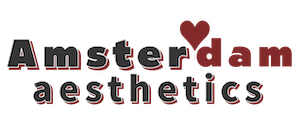Government takes next step towards bringing Einstein Telescope to the Netherlands
Lasers, mirror technology and vibration-free cooling equipment are just three of the innovative technologies that will be needed to build the Einstein Telescope. Minister of Education, Culture and Science Robbert Dijkgraaf announced today that businesses can now register for funding to develop and test these technologies. With this, the government is taking the next step towards bringing the Einstein Telescope to the Netherlands. The construction of the telescope is important. Not only will it increase understanding of gravitational waves, it will also be a major impulse for lasting scientific and economic growth in the Netherlands.
Super telescope
The Einstein Telescope is nothing like the kind of telescope people think of when they imagine looking at the stars. In fact, it’s a triangle of tubes – each one 10 kilometres long – buried several hundred metres under the ground. Scientists can use the telescope to detect gravitational waves in space by firing lasers down the tubes and carefully measuring deviations when the beams are reflected in mirrors. The information they acquire will give more insight into how black holes are born, the structure of neutron stars and what was happening in the universe immediately after the big bang. The telescope can also be used to test the hypotheses in Albert Einstein’s theory of relativity, another way it will help us better understand the universe. All this makes the telescope an extremely important instrument for international research in physics and astronomy.
A wealth of technologies
Building the telescope will require a lot of high-level technology, much of which has yet to be developed. The lasers, mirrors and extreme cooling technology are just three examples. Site conditions also need to be exactly right to ensure that measurements are not affected by the surroundings. For instance, tunnels have to be excavated with precision, and air pressure and humidity in the tunnels must be perfect. There can’t be any vibration from the surrounding area, which means no windmills in the immediate environs. And the cooling installation that the telescope requires can’t vibrate either, not even a small amount. All in all, the project comes with major technical challenges.
Pole position for businesses
The government wants to encourage businesses to get started on developing these new technologies for the telescope now. That’s why it’s providing funding to develop and test them. A total of €12 million is available.
‘I would love to have the Einstein Telescope here in the Netherlands,’ says Mr Dijkgraaf. ‘Its value for science and our economy isn’t something you can express in terms of money. I want to achieve two things through this funding. First, by investing now in the knowledge and technology that we’re going to need, we’re making our plan more robust and increasing our chances of being able to build the telescope here. At the same time, we’re driving innovation, and that’s good for our economy and our employment market and for the strength of our knowledge.’
Significant value
The construction of the Einstein Telescope in the Netherlands would be a valuable development for science in the Netherlands and the wider region. It would also be a boost for the local business sector and provide work for researchers, graduates and skilled workers. The project involves building work and maintenance as well as technology that businesses will supply. Since the telescope contributes to the Netherlands’ earning potential in the longer term, the project has received €42 million from the National Growth Fund. The budget for this funding scheme is drawn from that.
The Ministry of Education, Culture and Science, the Ministry of Economic Affairs and Climate Policy, the province of Limburg, the regional development agency of the province of Limburg (LIOF) and the National Institute for Subatomic Physics (Nikhef) are working hard to bring the telescope to the Netherlands. They have carried out feasibility studies and geological surveys and are establishing cooperation with Germany and Belgium. The Dutch government has reserved another €870 million to cover part of the construction work.
The EU is not expected to decide before 2026 whether to build the telescope in the border region between the Netherlands, Germany and Belgium. Italy is also developing a construction proposal. Whatever the location, construction is due to start in 2030.
Businesses can apply for funding through the regional development agency of the province of Limburg (LIOF). For more information, visit Einstein Telescope for business,
Originally published at https://www.government.nl/latest/news/2023/10/17/government-takes-next-step-towards-bringing-einstein-telescope-to-the-netherlands


